R (Small
Washington Tablet)
3. I decided to go ahead with line Ra4, for
I guess it could
correspond to glyphs in line Aa8. 1334 (670 + 664) - 109 =
1225 → 225 (August 13).
To be more precise, the fishing bird with
straight neck and forearm depicted in Aa8-66 (→ 8 * 66 = 2 * 264
= 528 → 52 * 8 = 416 = 2 * 208 = 2 * 264 - 2 * 56)
-2.jpg)
should be 14 days earlier than Aa8-80:
|
 |
*14 |
|
Aa8-66 (1315
→ 13 * 15 = 195) |
|
kua
mau te manu - i to ika |
|
Oct 2 (275 =
92 + 183 = 260 + 15)
*195 → 13 *
15 |
|
CLOSE TO
THE FULL
MOON: |
|
April 2 (471
- 14 = 457, 92)
*391 - *14 =
*377 |
|
*336 = *377
- *41
"Febr 21 (457
- 41 = 416, 92 - 41 = 51) |
... Ecclesiastically, the equinox is
reckoned to be on 21 March (even though the equinox occurs,
astronomically speaking, on 20 March in most years)
...
24º (N, the Pleiades) + 26º (S, Antares) = 50º ↔ "February 20
(2-20).

→ October 20 (6 + 2 = 8 months later than "February 20
in time-space) was at
the culmination of dry Alkes:
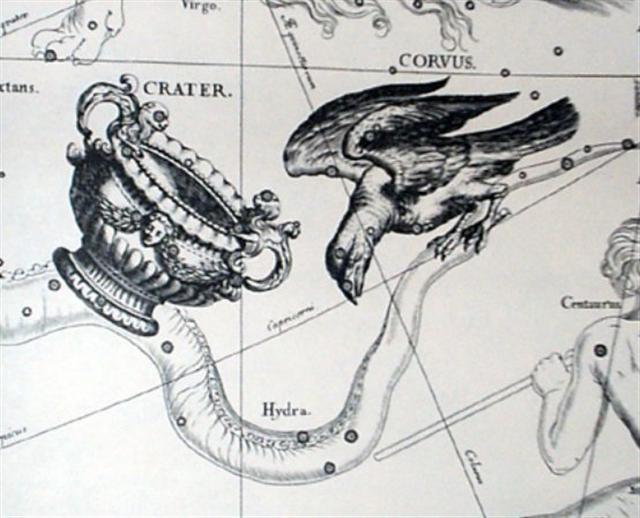
...
the bird, being sent with a cup for water, loitered at a
fig-tree till the fruit became ripe, and then returned to the
god with a water-snake in his claws and a lie in his mouth,
alleging the snake to have been the cause of the delay. In
punishment he was forever fixed in the sky with the Cup and the
Snake; and, we may infer, doomed to everlasting thirst by the
guardianship of the Hydra over the Cup and its contents. From
all this came other poetical names for our Corvus - Avis
Ficarius, the Fig Bird; and Emansor, one who stays
beyond his time; and a belief, in early folk-lore, that
this alone among birds did not carry
water to its young ...
 |
 |
 |
|
 |
 |
 |
|
Aa8-80 (1329) |
Aa8-81 (666) |
Aa8-82 |
Aa8-83 |
Aa8-84 |
Aa8-85 (1334) |
| ki to hatu huri |
ma to ua mata |
mae tae e ui hia
mai |
kua oho te tagata |
ki te henua |
- |
|
16 (260 + 29) |
Oct 17 (290) |
18 (472 - 181) |
19 |
20 |
21 (84 +
290) |
|
*209 |
*210 |
Τ
VIRGINIS |
THUBAN |
*213 |
Κ
VIRGINIS
Neck-2 (Dragon) |
|
16 (314 *
1½) |
17 (16 * 29½) |
(365 + 108) |
April 19 |
ALKES |
21 (111) |
|
To.
1. Particle sometimes used with the article in
ancient legends;
i uto
to te hau,
the
ribbon was in the float. 2. To rise (of the sun)
during the morning hours up to the zenith:
he-to
te raá. Vanaga. 1. Of. T Pau., Ta.:
to,
of. Mgv.:
to,
genitive sign. Mq.:
to,
of, for. 2. This, which. Churchill. Mgv.:
To,
to make a canoe of planks. Mq.:
to,
to build a canoe. Sa.:
to,
to build. Churchill.
Huri. 1. To turn (vt.), to
overthrow, to knock down:
huri moai, the overthrowing of the statues from
their ahus during the period of decadence on
the island. 2. To pour a liquid from a
container: ka huri mai te vai, pour me some
water. 3. To end a lament, a mourning: he
huri i te tagi, ina ekó tagi hakaou, with this
the mourning (for the deceased) is over, there shall
be no more crying. 4. New shoot of banana:
huri maîka. Vanaga. 1. Stem. P Mgv.: huri,
a banana shoot. Mq.: hui, shoot, scion. 2. To
turn over, to be turned over onto another side, to
bend, to lean, to warp; huri ke, to change,
to decant; tae huri ke, invariable; huri
ke tahaga no mai, to change as the wind; tae
huri, immovable; e ko huri ke,
infallible; huhuri, rolling; hakahuri,
to turn over; hakahuri ke, to divine. P Pau.:
huri, to turn. Mgv.: huri, uri,
to turn on one side, to roll, to turn upside down,
to reverse. Mq.: hui, to turn, to reverse. 3.
To throw, to shoot. 4. To water, to wet. 5. To
hollow out. Hurihuri: 1. Wrath, anger;
kokoma hurihuri, animosity, spite, wrath, fury,
hate, enmity, irritable, quick tempered, to feel
offended, to resent, to pester; kokoma hurihuri
ke, to be in a rage. 2. (huri 4)
hurihuri titi, to fill up. 3. To polish. 4. (uriuri).
Hurikea, to transfigure, to transform.
Churchill. Mq. huri, resemblance. Sa.:
foliga, to resemble. Churchill. |
 |
 |
 |
 |
|
Ab1-1 (671
→ 461 + 210) |
Ab1-2 (2 * 336
= 24 * 28) |
Ab1-3 |
Ab1-4 |
| Te
hoea |
rutua
te pahu - rutua te maeva - atua rerorero - atua ata
tuu |
|
Hoea, instrument for
tattooing. Barthel. |
|
Oct 22 (295, *215)
ARCTURUS
(*215.4 → *41.4 + *174.0)
SYRMA
(*215.6 → *26.6 + *189.0 → 174 + 15) |
KHAMBALIA (Λ VIRGINIS, *216.4), Υ VIRGINIS (*216.5)
*216.4 - *41.4 = *175.0
KHAMBALIA
(*216.4)
Oct 23 AD 2023 (296)
MARS (*216) |
Oct 24 |
Oct 25 (*218, *584
→ Venus)
Φ
VIRGINIS (*218.7)
FOMALHAUT
(α Piscis Austrini)
|
|
13 (225
→
408
- 183) |
August 14 (*146,
*512) |
(*513
→
19 * 27
= 9 * 57) |
16 (*514) |
|
CLOSE TO
THE FULL
MOON: |
|
April 22 (112,
*32) |
23 |
24 |
April 25 (115, *35) |
|
MIRA |
→ "March
14 (3-14, 73) |
*360.0 = *35.4 - *41.4 |
|
... Although an old
constellation, Cetus is by no means of special
interest, except as possessing the south pole of the
Milky Way and the Wonderful Star, the variable Mira;
and from the fact that it is a condensation point of
nebulae directly across the sphere from Virgo, also
noted in this respect ...
... December 13 is evidently a date in harmony with
the date of
August 13, when according to the Mayas our present
world had been created. In contrast to August 14
when
Samsonov (the Son of Samson) struggled to survive in
the marshes of Poland. Life (light) implies death
(darkness) ... |
We can compare
the shape of Aa8-85 with that in Ga1-21 (in high summer):
|
 |
*128 |
 |
 |
|
Ga1-21 |
ALKES |
Aa8-85 |
|
June 14
(165, *85) |
April 20
(100, *20) |
Oct 21 (294,
*214) |
At Aa8-85 the Sun seems to have been at
October 21 where the Chinese
2nd station was alluding to a Neck - presumably to
the Neck of the Green Serpent in December 30 (364), i.e. at
the South Dipper (φ
Sagittarii), which was 70 days later:

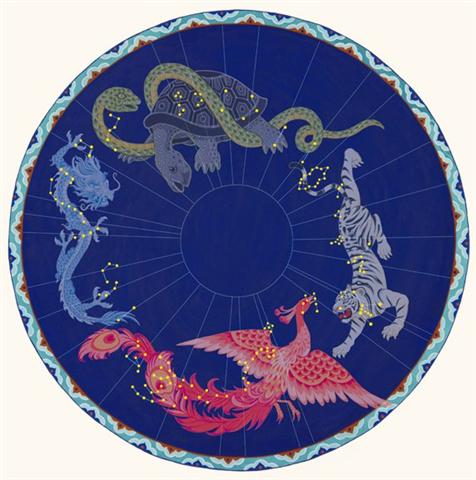
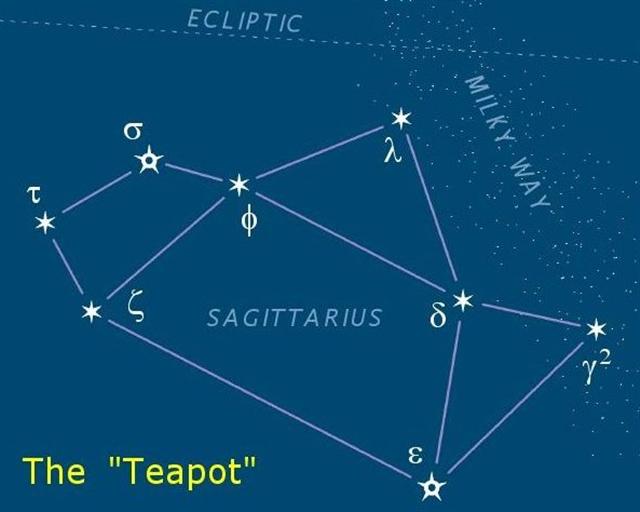
And 19 days earlier had been
the fishing heuheu bird with a conspiciously long and
straight neck:
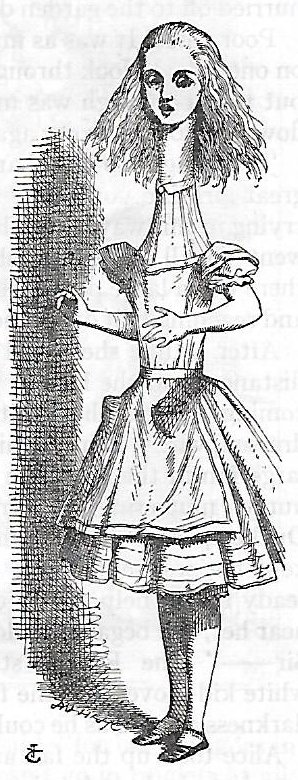
...
'CURIOUSER and
curiouser!' cried
Alice (she was so
much surprised, that
for the moment she
quite forgot how to
speak good English),
'Now,
I'm opening
out like the largest
telescope that ever
was! Good-bye,
feet!' (for when she
looked down at her
feet, they seemed to
be almost out of
sight, they were
getting so far off).
'Oh, my poor little
feet, I wonder who
will put on shoes
and stockings for
you now, dears? I'm
sure I
sha'n't be able! I
shall be a great deal too far off to trouble myself about you:
you must manage the best way you can - but I must be kind to
them', thought Alice, 'or perhaps they wo'n't walk the way I
want to go! Let me see, I'll give them a new pair of boots every
Christmas ...
|
 |
|
Aa8-66 (1315
→ 13 * 15 = 195) |
|
kua
mau te manu - i to ika |
|
Oct 2 (275 =
92 + 183 = 260 + 15)
*195 → 13 *
15
MINELAUVA (δ) |
|
CLOSE TO
THE FULL
MOON: |
|
April 2 (471
- 14 = 457, 92)
*391 - *14 =
*377 |
|
*336 = *377
- *41
"Febr 21 (457
- 41 = 416, 92 - 41 = 51) |
Minelauva was located at her girdle (→ girl), a place
which in some way ought to be comparable to
Zosma (δ
Leonis).
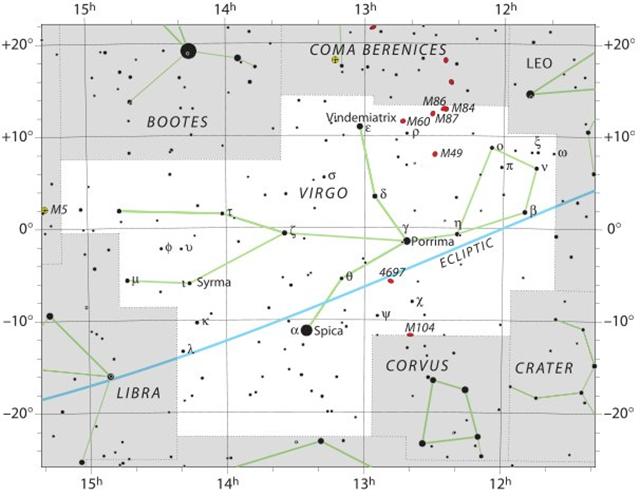

 |
 |
 |
 |
|
Aa8-67 (1316) |
Aa8-68 |
Aa8-69 (664 + 654) |
Aa8-70 (655) |
|
Oct 3 |
4 |
5 |
6 (*199) |
|
VINDEMIATRIX (ε) |
*197 |
APAMI-ATSA (θ) |
*199 |
| kua noho i te henua - i te ragi |
ma to ua |
ma te maitaki |
i te henua |
 |
 |
 |
 |
|
Aa8-71 (1320) |
Aa8-72 (→ 9 * 73 = 657) |
Aa8-73 → 8 * 73 = 584 |
Aa8-74 (664 +
659 = 1323) |
|
Oct 7
(280) |
8 |
9 (282, *202) |
10 |
|
σ Virginis (*200.4) |
*201 |
SPICA
Horn-1 (Crocodile) |
71 Virginis |
|
ma te akau ua - kua
vari te vaero |
o te nuku huki - e nuku mata |
|
Nuku. 1. Pau.: nuka, crowd,
throng. Ta.: nuú, army, fleet. Mg.: nuku,
a host, army. 2. Mgv.: nuku, land, country,
place. Sa.: nu'u, district, territory,
island. Churchill. |
 |
 |
|
Aa8-75 (1040
+ 284) |
Aa8-76
(664 + 661) |
|
Oct 11 (364 - 80) |
12 (285) |
|
*204 |
HEZE (ζ,
*205.0) |
|
mai tae hanau
hia - ki tona purega |
maitaki |
|
Tae. 1. Negation used in conditional and
temporal clauses: ana ta'e hoa te ûa, ina he vai, when it
does not rain, there is no water. Also used with some verbal forms
such as: o te aha koe i-ta'e-oho mai-ai? why didn't you come?
Otherwise its use is limited to adjectives or verbal adjectives:
tagata ta'e hupehupe, person who is not weak, hard worker;
nohoga ta'e oti, endless existence, eternity. 2. Interjection
expressing admiration, always used with he: ta'e he
tagata! what a man! Ta'e he aga! what a great job!
Ta'e he tagata koe mo keukeu i te henua! what a good farmer you
are! Vanaga. 1. Prepositive negative: without, not, none. PS To.:
tae, prepositive negative. 2. To remain; tae atu ki, as
far as, until. Taehaga (tae 1), to shake the head in
sign of negation, reluctant, to disdain, to be displeased. 3. Pau.:
tae, to arrive. Mgv.: tae, id. Ta.: tae, id.
Ma.: tae, id. 4. Pau.: taetae, elephantiasis in
scroto. Ta.: taetae, ill, illness. Churchill. |
 |
 |
 |
|
 |
 |
 |
|
Aa8-80 (1329) |
Aa8-81 (666) |
Aa8-82 |
Aa8-83 |
Aa8-84
(1333) |
Aa8-85 |
| ki to hatu huri |
ma to ua mata |
mae tae e ui hia
mai |
kua oho te tagata |
ki te henua |
- |
|
16 (260 + 29) |
Oct 17 (290) |
18 (472 - 181) |
19 |
20 |
21 (84 +
290) |
|
*209 |
*210 |
Τ
VIRGINIS |
THUBAN |
*213 |
Κ
VIRGINIS
Neck-2 (Dragon) |
|
16 (314 *
1½) |
17 (16 * 29½) |
(365 + 108) |
April 19 |
ALKES |
21 (111) |
|
To.
1. Particle sometimes used with the article in
ancient legends;
i uto
to te hau,
the
ribbon was in the float. 2. To rise (of the sun)
during the morning hours up to the zenith:
he-to
te raá. Vanaga. 1. Of. T Pau., Ta.:
to,
of. Mgv.:
to,
genitive sign. Mq.:
to,
of, for. 2. This, which. Churchill. Mgv.:
To,
to make a canoe of planks. Mq.:
to,
to build a canoe. Sa.:
to,
to build. Churchill.
Huri. 1. To turn (vt.), to
overthrow, to knock down:
huri moai, the overthrowing of the statues from
their ahus during the period of decadence on
the island. 2. To pour a liquid from a
container: ka huri mai te vai, pour me some
water. 3. To end a lament, a mourning: he
huri i te tagi, ina ekó tagi hakaou, with this
the mourning (for the deceased) is over, there shall
be no more crying. 4. New shoot of banana:
huri maîka. Vanaga. 1. Stem. P Mgv.: huri,
a banana shoot. Mq.: hui, shoot, scion. 2. To
turn over, to be turned over onto another side, to
bend, to lean, to warp; huri ke, to change,
to decant; tae huri ke, invariable; huri
ke tahaga no mai, to change as the wind; tae
huri, immovable; e ko huri ke,
infallible; huhuri, rolling; hakahuri,
to turn over; hakahuri ke, to divine. P Pau.:
huri, to turn. Mgv.: huri, uri,
to turn on one side, to roll, to turn upside down,
to reverse. Mq.: hui, to turn, to reverse. 3.
To throw, to shoot. 4. To water, to wet. 5. To
hollow out. Hurihuri: 1. Wrath, anger;
kokoma hurihuri, animosity, spite, wrath, fury,
hate, enmity, irritable, quick tempered, to feel
offended, to resent, to pester; kokoma hurihuri
ke, to be in a rage. 2. (huri 4)
hurihuri titi, to fill up. 3. To polish. 4. (uriuri).
Hurikea, to transfigure, to transform.
Churchill. Mq. huri, resemblance. Sa.:
foliga, to resemble. Churchill. |
The constellation of Virgo will evidently be finished at Aa8-85,
at October 21 (294) = April 21 (111) + 366 / 2. And the date
according to the era of Bharani should here be *214 - *41 =
*173 (253, "September 10) = October 21 (294) - 41.
Therefore the date of heliacal Minelauva ought to be 1334
(Aa8-85) - 1315 (Aa8-66) = 19 days earlier:
|
 |
*18 |
 |
 |
|
Aa8-66
(1315) |
Aa8-84
(1333) |
Aa8-85 |
|
MINELAUVA (*195)
Oct 2
(275) |
*213
ALKES |
Κ
VIRGINIS (*214)
Oct 21
(294) |
|
"Aug 22
(234, *154) |
"Sept 10
(253, *173) |
|
"Febr 21
(457 - 41 = 416, 92 - 41 = 51 = 234 - 183)
*336
↔
416 - 80
→ 48
weeks (Dec 2, 336) |
April 20
(110, *30) |
"March 11 (51 + 19 = 70 = 253 - 183)
*355 = *336 + *19
→
Dec 21 (355) |
|
... In 1638 Johannes Holwarda determined a
period of the star's reappearances, eleven months; he is often
credited with the discovery of Mira's variability. Johannes
Hevelius was observing it at the same time and named it 'Mira'
(meaning 'wonderful' or 'astonishing,' in Latin) in 1662's
Historiola Mirae Stellae, for it acted like no other known
star. Ismail Bouillaud then estimated
its period at 333 days, less than one day off the modern
value of 332 days, and perfectly forgivable, as Mira is known to
vary slightly in period, and may even be slowly changing over
time ... |
The mediating Bharani evidently transformed her right ascension nights
for the Full Moon into current days for the Sun.
Given that we add 355 - 294 = 61 days = 366 / 6.
And 1314
(Aa8-65) ↔ 1000 + 314 (π).
|

-2.jpg)















